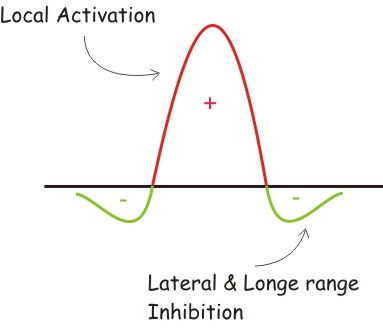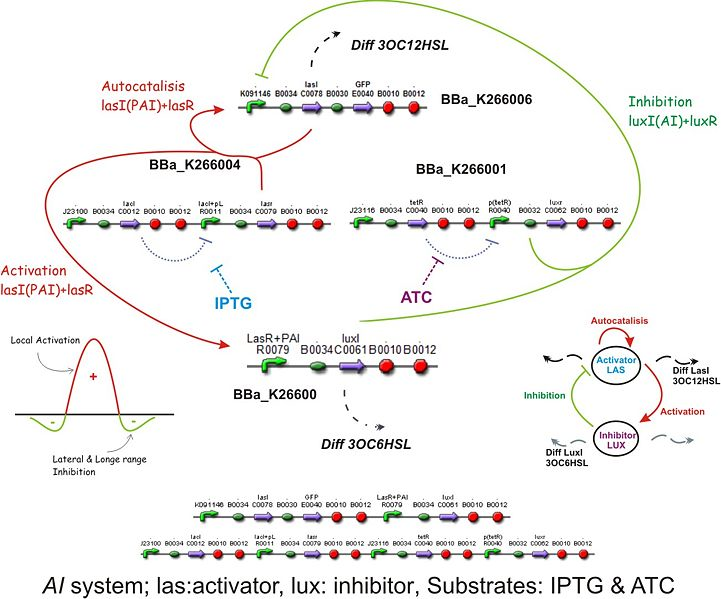Team:IPN-UNAM-Mexico/Modeling/Introduction
From 2009.igem.org
 Introduction: Developing an Activator-Inhibitor network
Introduction: Developing an Activator-Inhibitor network
As described in the project section, the spatiotemporal patterns we are looking forward to reproduce on the lab were based on the equations of reaction-diffusion with a chemical kinetics' and diffusive behavior of morphogens in an activator-inhibitor system. The qualitative dynamics of this kind of systems such as local activation and long range inhibition were the base and theoretical framework to generate our BioBricks synthetic network.
The following equation is the general expression of a reaction-diffusion system, which can be seen as a generalization of the [http://en.wikipedia.org/wiki/Heat_equation heat equation]. This tells us broadly speaking that the change on time of the reactants concentration depends on their mutual interaction and their diffusion over the space; this last term being defined by coefficients of D (the diagonal matrix with the diffusion constants or the reactants) times the Laplace operator.
We will represent the dynamics of our network as an activator-inhibitor system, so we will need only a few equations to describe it, where F and G are the functions that describe the chemical kinetics of morphogens A and B, with diffusion coefficient constants D_A and D_B:
Gierer and Meinhardt proposed in 1972 a system of reaction diffusion equations that fulfill the Turing hypothesis for generating spatiotemporal patterns. In this particular systems A stands for the activator and B for the inhibitor in:
Which with the proper adimentionalizing analysis leads to:
and including the activator's inhibition results in:
where a and b are positive constants and k is a measure of the strength of the inhibition.
As introduced in the project section and full described in the parts section we designed a synthetic network with the qualitative properties of an activator-inhibitor system.
Along with the developing of the project we continued to gather the information required to model the activator-inhibitor system as an approximation of the BioBricks network. We also needed the diffusion constants of PAI and AI, since its chemical nature makes a big difference for the formation of the patterns.





 "
"






